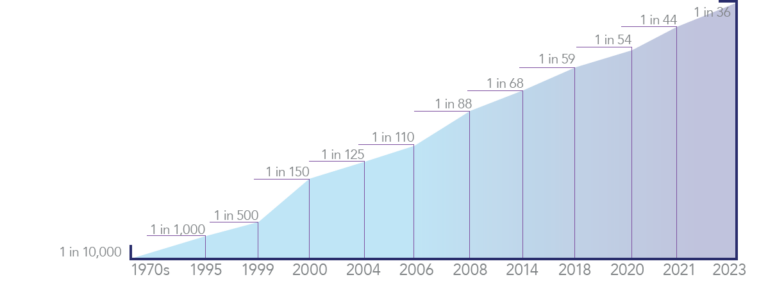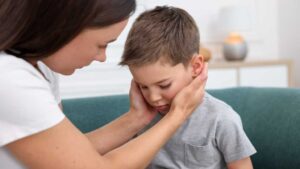The Centers for Disease Control and Prevention (CDC) has released a new autism rate estimation for Autism Spectrum Disorder (ASD) in the United States. Previously (December 2021), the estimate had been 1 in 44 American 8-year-olds, which was already alarmingly high. On March 23rd, the CDC officially raised their estimate to 1 in 36, representing a startling 4-fold increase in the prevalence of the disorder since the CDC started collecting data in 2000.
The study, published in the Morbidity and Mortality Weekly Report, shows that 4% of boys and 1% of girls aged 8 have autism. ASD appearing to be 3.8 times more prevalent in boys than girls is consistent with all previous reporting periods.
The article (Higher Autism Prevalence and COVID-19 Disruptions) also mentions how the COVID-19 pandemic may have impacted early ASD identification in young children. It anticipates long-lasting effects due to delays in identifying and initiating services.
From the website: “In 2020, children born in 2016 were 1.6 times as likely as children born in 2012 to be identified as having ASD by 48 months of age. This is important because the earlier a child is identified with ASD, the earlier they can access services and reports.”
Autism Rates Identified Higher in Some Groups Than Previous Years
In addition to the overall estimation increase, the Autism and Developmental Disabilities Monitoring (ADDM) Network also found the percentage of 8-year-old children identified with ASD was higher among Black, Hispanic, and Asian or Pacific Islander (A/PI) children compared to White children.
The current breakdown of prevalence stands at 33.4 A/PI, 31.6 Hispanic, 29.3 Black, and 24.3 White (per 1,000 children). However, the findings may merely indicate improvements in ASD awareness, identification, and access to services in communities serving a broad range of communities.
Although progress in identifying ASD among children of all races and ethnicities is apparent, concerns have risen over the percentage of Black children with ASD who also have an intellectual disability (ID), which is now 50.8% among 8-year-olds. This percentage is higher than White (31.8%) or Hispanic (34.9%) and is consistent with previous reports from the ADDM Network.
Why the New Autism Rates Matter
Data is critical to provide early awareness of important public health trends, such as new patterns of racial and ethnic differences. States and communities can develop strategies to promote awareness and improve the identification of ASD. Changes to estimations highlight the importance of equitable diagnostics, treatment, and support services for all children and families struggling with ASD. More research will always be required to understand why the prevalence continues to change and how to best apply identification strategies in all communities.
ABA Centers of Florida – Your Resource for ALL Autism News
If you or someone you know has a child showing signs of autism, our trained ABA therapy specialists are available to help! At ABA Centers of Florida, we take the time and effort to provide a comprehensive treatment plan tailored to individual needs. For more information regarding our ABA therapy services, the gold standard for autism care, contact us today and ask about our free evaluation.
Visit this page frequently to stay current on any additional discoveries. The CDC, ADDM Network, and other such organizations will continue to monitor the number and characteristics of children with ASD over time. ABA Centers of Florida will continue to report their findings to benefit our communities and clients.








